This project is made possible through the partnership of WATER CHARITY and the NATIONAL PEACE CORPS ASSOCIATION. ![]()
This project has been completed. Scroll down below to read the conclusion.
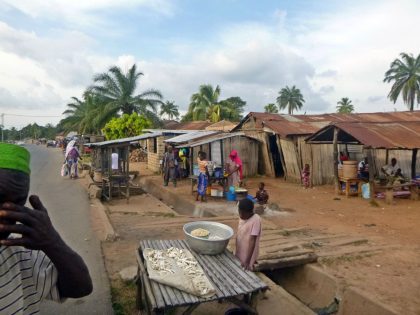 Location
Location
Lama Tessi, Centrale Region, Togo, West Africa
Community Description
Lama Tessi is a large village 20 kilometers south of the regional capital of Sokodé, straddling both sides of the national highway. This north-south artery runs through the middle of the country serving as the main conduit for local and regional commerce, and access to the country’s major urban centers which lie along this highway. The national highway is also a major trucking route from the port of Lomé to Mali, Burkina Faso and Niger to the north. Communities such as Lama Tessi with scattered households on both sides of the highway have taken advantage of the commercial possibilities and established roadside markets and small commercial enterprises.
The inhabitants are a mix of predominantly Kotikoli, Kabyé and Losso in a predominantly Muslim community of subsistence farmers, growing the common assortment of crops; maize, beans, soy, and yam.
The first health clinic at Lama Tessi was built in 1955 as what is kno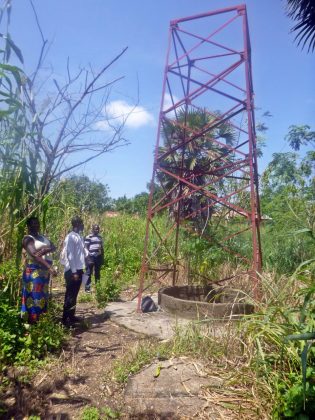 wn as a “case de santé” which is the first rung of health care, established by the community itself, usually in small, remote villages without the oversight of the Ministry of Health. At the most basic level these village “health huts” are “staffed” by community members trained in minimal health care, i.e. malaria prevention and basic hygiene. The center later became a government-sponsored family planning clinic with the addition of a maternity building, and later was designated as a “Centre Medical Sociale” (CMS), one step below the regional hospital, and in 2016 Plan International added a pharmacy. The CMS has eight personnel though only two are paid by the government, the head nurse and a midwife, and the other six by the community.
wn as a “case de santé” which is the first rung of health care, established by the community itself, usually in small, remote villages without the oversight of the Ministry of Health. At the most basic level these village “health huts” are “staffed” by community members trained in minimal health care, i.e. malaria prevention and basic hygiene. The center later became a government-sponsored family planning clinic with the addition of a maternity building, and later was designated as a “Centre Medical Sociale” (CMS), one step below the regional hospital, and in 2016 Plan International added a pharmacy. The CMS has eight personnel though only two are paid by the government, the head nurse and a midwife, and the other six by the community.
The original water source at the clinic was an open, shallow (7-meter-deep) well some distance from the clinic, later sealed, and a metal water tower and hand pump added. However, water was never routed into the clinic itself. For a period of time, the center was equipped with water from a municipal water system. However, the system is currently in disrepair leaving the center without running water. Today the clinic is equipped with indoor plumbing and outside septic tanks though no delivery room plumbing specific to the discharge of waste. The clinic has electric power.
The population served is around 8,000 including neighboring villages with an average of 300 patients per month and births averaging 20 per month. Common ailments are malaria, typhoid, gastrointestinal and respiratory diseases.
Pro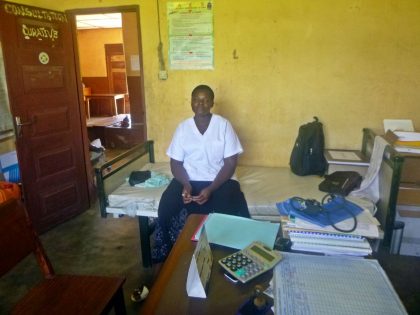 blem Addressed
blem Addressed
While the center is equipped with indoor plumbing and is linked to a municipal water source, the latter is currently nonfunctioning and has been for the past few years. Hence, the health center purchases water from a borehole well a kilometer away. The water is treated with bleach when used for consumption but is otherwise left untreated. The lack of running water is particularly onerous for the midwives and their patients as relatives of the women are often required to provide additional water during and post-birth for clean-up. The lack of water requires the midwives to carry the waste by hand through the building to a pit outside. The entire process is unhygienic in addition to endangering the health of the clinic staff through constant contact with blood.
Project Description
This project is to build a borehole well for the clinic. Under the guidance of the Department of Hydraulics and Sanitation’s regional office in Sokodé and with support from the Ministry of Health regional director, who identified clinics with the most critical need, and a local drilling company, this project proposes to drill a 60- to 100-meter borehole well at the clinic, equipped with the following:
• An electric submersible pump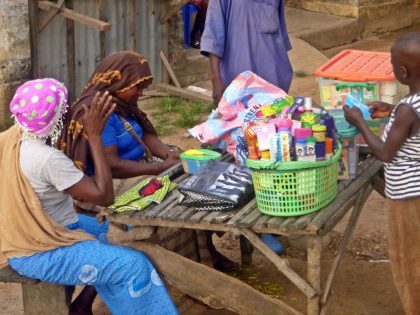
• a 4.5-meter high cement block water tower
• a 2 meter**3 polyethylene tank
• piping to the main intake valve at the clinic
The submersible pump will be run using an electric generator. The local drilling company selected, Plomberie Génerale de Réalisation de Forage, in operation since 1998 and based in Tchamba, has extensive experience drilling deep borehole wells throughout Togo and regionally in Burkina Faso, Benin, and Nigeria.
Project Impact
Number of people affected by the project: 8,000
Project Administration
This project will be managed by Anne Jeton, hydrologist and Returned Peace Corps Volunteer (RPCV), Burkina Faso (’82-’85) and Returned Peace Corps Response Volunteer (RPCRV), Togo (’16 -’17).
Anne was sent to Togo on behalf of Water Charity to develop and administer new projects, and to coordinate with the Peace Corps.
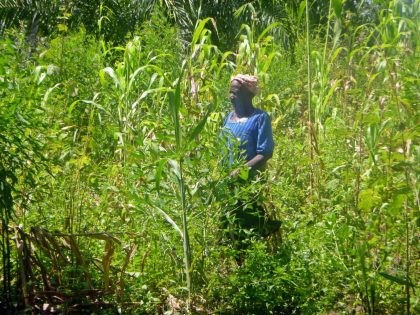 Monitoring and Maintenance
Monitoring and Maintenance
Along with staff from the Department of Hydraulics and Sanitation who will monitor the well “indefinitely” (the well data becomes part of the official borehole well database, and as such is included in periodic field monitoring by technicians based in each Prefecture), the contract for well drilling states a one-year guarantee provided by the drilling company. Problems with pump and borehole functioning are typically resolved in the first month of use.
Proper screening of the borehole and submersible pump placement relative to the static water table often mitigates the most common problems. However, any mechanical problems surfacing in the first year will be the responsibility of the drilling company.
The clinic staff will be responsible for maintaining a well repair account which will be funded from the sale of medicines. The clinic will decide a nominal fee for water use should the water account be insufficient, or the community will be asked to contribute directly to the costs.
Project Funding
This project has been funded by an anonymous donor.
Conclusion of Lama Tessi Clinic Borehole Water System Project – Togo
This project was managed by Anne Jeton, hydrologist and Returned Peace Corps Volunteer (RPCV), Burkina Faso (’82-’85) and Returned Peace Corps Response Volunteer (RPCRV), Togo (’16 -’17).
Project Name: Lama Tessi Health Clinic Borehole Well Water System, Centrale Region, Togo
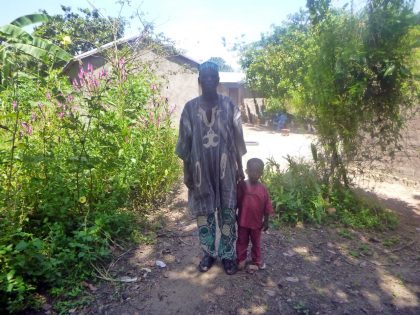 The purpose of the borehole water system project at the Lama Tessi health clinic was to address a lack of both potable and year-round water, either the absence of or nonfunctioning indoor plumbing and the lack of hygienic disposal of afterbirth blood and tissue.
The purpose of the borehole water system project at the Lama Tessi health clinic was to address a lack of both potable and year-round water, either the absence of or nonfunctioning indoor plumbing and the lack of hygienic disposal of afterbirth blood and tissue.
The maternity delivery room was equipped with a sink, faucet and running, potable water, and through additional outside funding; a floor drain and a discharge chamber, both plumbed to a dedicated subsurface cement-lined and ventilated septic tank. Delivery room waste (blood and tissue) can now be dispensed with directly in the maternity room in a safe and hygienic manner, rather than hand-carried by the midwives to an outdoor pit or in many cases poured into the latrines.
Following borehole drilling, a “pump test” was run to determine the well’s productivity and in turn the hydraulic properties of the aquifer. The pump was run for several hours at a rate like actual use and the declining water table (drawdown) was measured at regular intervals. The Lama Tessi borehole was drilled to a depth of 69 meters and has a yield of 4,800 liters/hour which is more than adequate to supply both the clinic needs and those of the surrounding households. The pump test also indicated a rapid refilling of the borehole, implying even when running at the maximum yield rate, the well should recover quickly and not result in significant lag times. Simply put, the hydraulic conditions of the well are favorable to ensure a sustainable water supply for many years to come (assuming the system is well maintained).
Water samples from both the borehole well and the original clinic well were taken and sent to the Regional laboratory in Sokodé, the regional capital, for a complete microbial and inorganic compound analysis. The results of this analysis indicate zero presence of any of the disease-causing bacteria tested (E Coli, Salmonella, Fecal Streptococci, Enterococci and a general category of thermotolerant Coliforms) in the new borehole well.
Numerous visits were made during the well installation by the Water Charity Coordinator and the government hydrologist to oversee construction and to insure the clinic and community leaders understood the responsibilities associated with maintaining and insuring a sustainable water supply. A final visit by the Regional Director of hydraulics insured the borehole well and the associated delivery system met all the driller’s contract requirements and functionality.
An official technical opening concluded the project with a presentation by the driller on the borehole well components, brief discourses by the Department of Hydraulics Regional Director, village leaders, the Water Charity coordinator, and a representative from the regional ministry of health. As the representative for Water Charity and its donor(s), the Coordinator reinforced previously discussed themes of maintenance and upkeep through the active participation of a community water committee and a clinic repair account, to manage public access to the well in a non-disruptive manner to the clinic staff and patients, and most importantly to take responsible ownership of this valuable resource.
CONCLUSION AND IMPACT:
The Lama Tessi clinic serves a population of approximately 8,000 people, including the neighboring villages, who will directly benefit from a more hygienic health clinic. While clearly not all 8,000 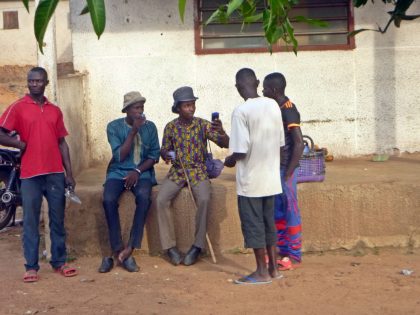 people living in Lama Tessi will be accessing the well water for personal consumption, the community development liaison estimated perhaps as many as 2,000 inhabitants may utilize the community access point. Given the high quality of water at the clinic borehole well, the number of water users may be more numerous than previously estimated as the small municipal water system is currently nonfunctioning. The clinic anticipates seeing a rise in births as there is now running water and female relatives are no longer obliged to fetch water for the patient, in addition to an overall improvement in hygiene. The clinic staff will use access to potable water to encourage better overall hygiene, as most of the disease-causing bacteria in the community water sources are due to fecal transmission by both animals and humans. The clinic staff, particularly the midwives and their assistants (which often include female relatives) will be better protected against blood-borne diseases as afterbirth material (blood and tissue) will be dispensed in a rapid and efficient manner, significantly reducing exposure.
people living in Lama Tessi will be accessing the well water for personal consumption, the community development liaison estimated perhaps as many as 2,000 inhabitants may utilize the community access point. Given the high quality of water at the clinic borehole well, the number of water users may be more numerous than previously estimated as the small municipal water system is currently nonfunctioning. The clinic anticipates seeing a rise in births as there is now running water and female relatives are no longer obliged to fetch water for the patient, in addition to an overall improvement in hygiene. The clinic staff will use access to potable water to encourage better overall hygiene, as most of the disease-causing bacteria in the community water sources are due to fecal transmission by both animals and humans. The clinic staff, particularly the midwives and their assistants (which often include female relatives) will be better protected against blood-borne diseases as afterbirth material (blood and tissue) will be dispensed in a rapid and efficient manner, significantly reducing exposure.
The Regional Director of the Department of Hydraulics stated in his technical report the Lama Tessi health clinic borehole well water system has fully succeeded in meeting both the local and national objectives for potable water. The Department of Hydraulics, the Ministry of Health and staff at each rural health clinic served by this project have repeatedly been astounded at the expediency with which funding was made available thus allowing work to begin within weeks of submitting the project request. Thank you, donors and Water Charity! The efficiency of work that followed was due in large part to the incredible efficiency, planning, and hard work by the local drilling company’s crew. The Regional Director and the hydrogeologist at the Department of Hydraulics and Water in Sokodé also contributed their time, vehicle and expertise to insure all technical aspects of the project conformed to modern standards and have assured their continued presence as the borehole wells are now part of the national water database and monitoring program. Having the government of Togo involved from the beginning in this suite of health clinic projects, from the selection of health centers to technical oversight and continued monitoring by the Ministry of Water officials, has confirmed the importance of not doing community projects as isolated NGOs. This last point is critical to continued success as most water projects in Togo are implemented without government oversight, leading to a myriad of problems none the least being poor technical implementation and little to no continued oversight.
The Lama Tessi project was implemented in concert with five other health center water system projects, scattered over two districts – all of which were completed on schedule. The community of Lama Tessi offers its sincere thanks and gratitude to the donor(s) for this valuable water resource. As they say here “l’eau est la vie”. Water is life, and the cleaner the water the longer and more satisfying life will be! Un grand merci!